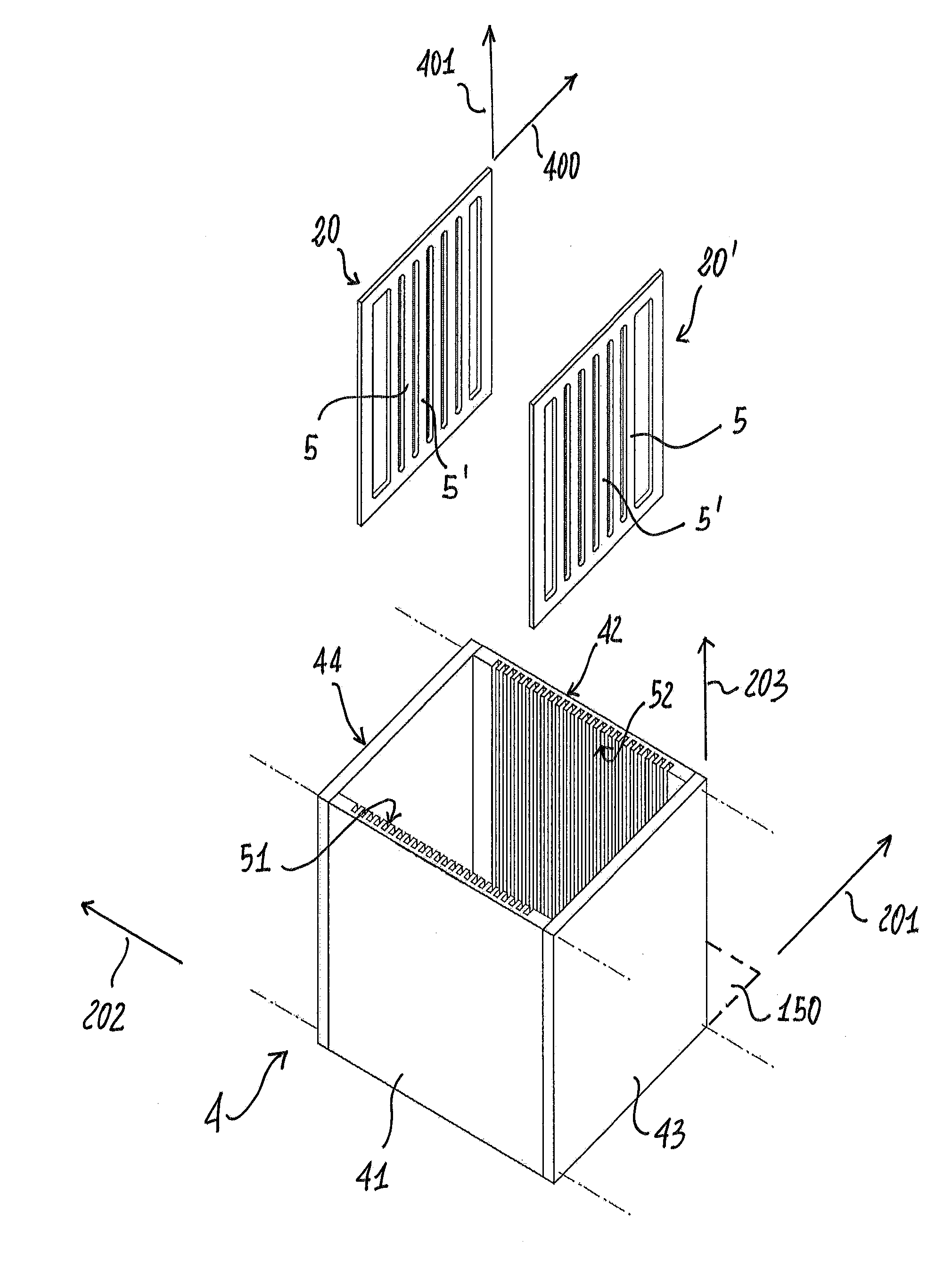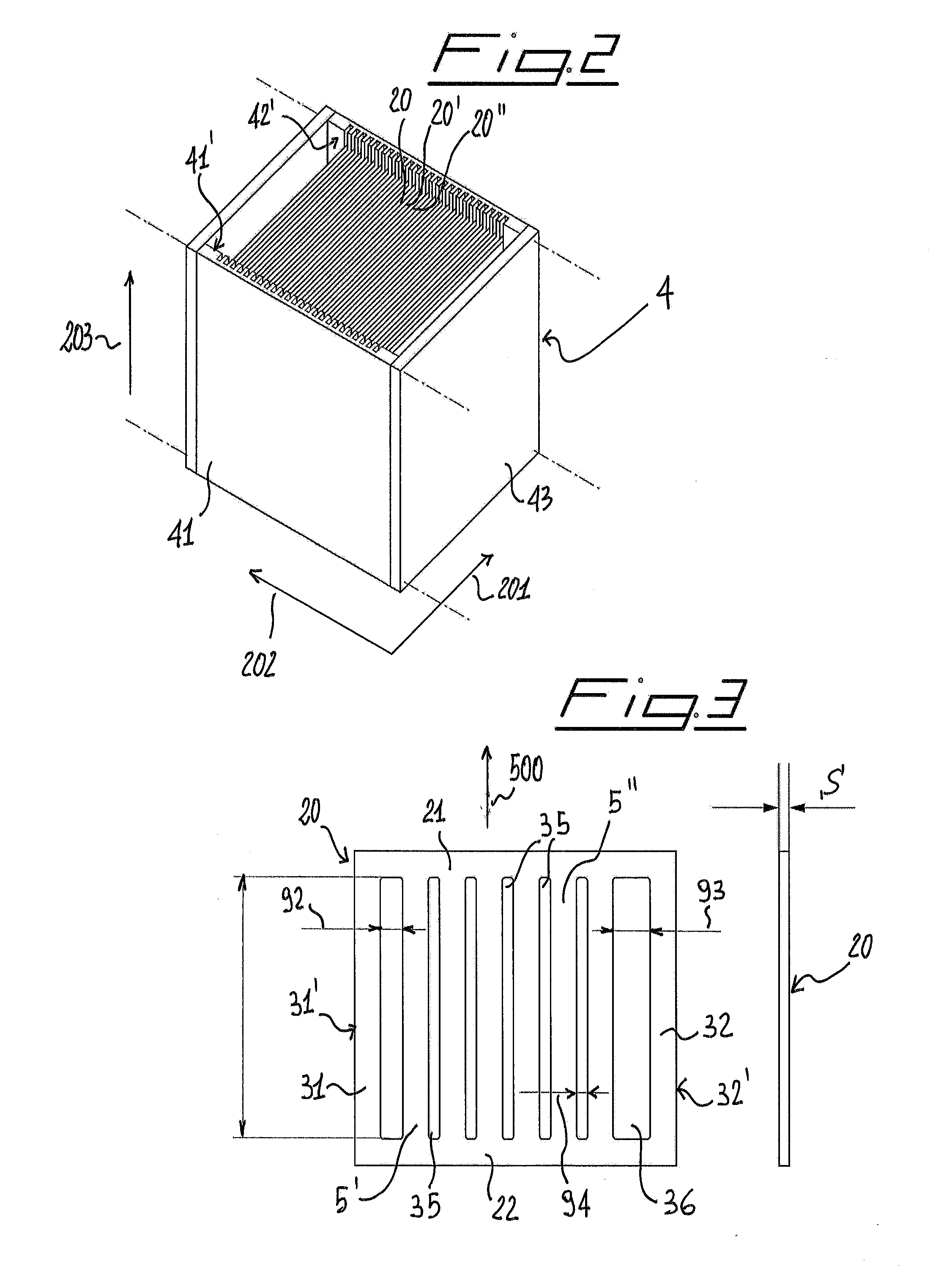Method for manufacturing panels having translucent elements
a technology of translucent inserts and manufacturing methods, which is applied in the direction of decorative arts, building components, applications, etc., can solve the problems of reducing the production efficiency of cementitious mortar, wasting expensive materials (optical fibers), and limiting the production of rejects, so as to reduce production costs, improve the accuracy of positioning translucent inserts, and limit production. the effect of rejects
- Summary
- Abstract
- Description
- Claims
- Application Information
AI Technical Summary
Benefits of technology
Problems solved by technology
Method used
Image
Examples
Embodiment Construction
[0035]The present invention thus relates to a method for manufacturing cementitious mortar-based panels 1. In particular, each panel 1 obtained by means of the method according to the present invention comprises a plurality of through portions 55 made of translucent material which have the function of transmitting light between the two opposite sides 1′, 1″ of panel 1. With reference to FIGS. 10 and 12, more specifically, for the purposes of the present invention, the expression “panel 1” indicates a prism-shaped cementitious mortar-based body which develops along a first reference direction 100 and along a second reference direction 101 which is substantially orthogonal to the prism 100. Such a body is thus delimited by a pair of main first flat sides 1′, 1″, a first pair of sides 2′,2″ which develop parallel to the first direction 100 and a second pair of sides 3′,3″ which develop parallel to the second reference direction 101. The main sides 1′, 1″ have a greater extension than t...
PUM
| Property | Measurement | Unit |
|---|---|---|
| water absorption coefficient | aaaaa | aaaaa |
| temperature | aaaaa | aaaaa |
| translucent | aaaaa | aaaaa |
Abstract
Description
Claims
Application Information
 Login to View More
Login to View More - R&D
- Intellectual Property
- Life Sciences
- Materials
- Tech Scout
- Unparalleled Data Quality
- Higher Quality Content
- 60% Fewer Hallucinations
Browse by: Latest US Patents, China's latest patents, Technical Efficacy Thesaurus, Application Domain, Technology Topic, Popular Technical Reports.
© 2025 PatSnap. All rights reserved.Legal|Privacy policy|Modern Slavery Act Transparency Statement|Sitemap|About US| Contact US: help@patsnap.com



